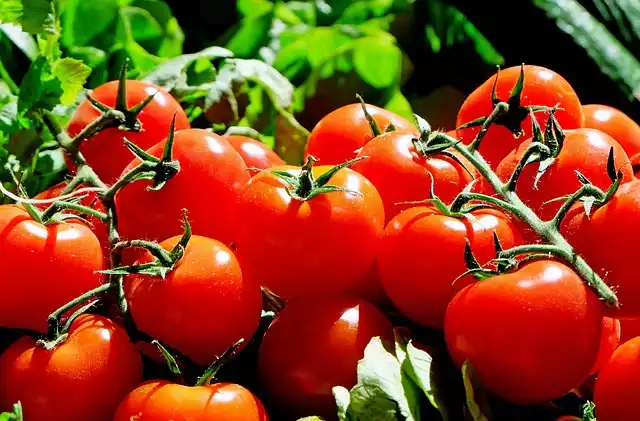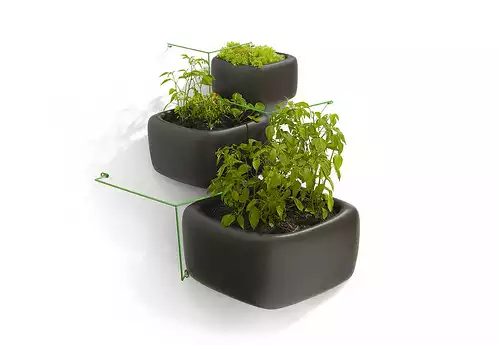Grow Organic Tomatoes
Imagine biting into a plump, juicy tomato, its sun-warmed sweetness bursting with flavor in your mouth.
Now, picture this culinary delight coming straight from your own garden, grown without the aid of synthetic fertilizers or pesticides.
Welcome to the vibrant world of growing organic tomatoes—a journey that marries the joys of gardening with the satisfaction of sustainable living.
In this thrilling adventure, you’ll discover not only how to nurture these ruby treasures from seed to harvest but also unlock secrets that make each bite an explosion of taste unmatched by any store-bought variety.
Whether you’re a seasoned green thumb or a budding gardener ready to sow your first seeds, preparing to grow organic tomatoes promises an exciting quest filled with challenges, learning curves, and ultimately, delectable rewards.
Join us as we dig into the heart of organic gardening; it’s time to transform your patch of earth into a flourishing oasis brimming with luscious tomatoes!
Table of Contents Grow Organic Tomatoes
Prepare soil for optimal growth
In order to cultivate a thriving garden and achieve optimal growth for your plants, it is crucial to prepare the soil properly.
Start by assessing the soil’s composition, moisture content, and pH levels.
Conducting a soil test can provide valuable insights into its nutrient levels and any deficiencies that need to be addressed.
Based on the test results, you can then amend the soil with organic matter such as compost, well-rotted manure, or peat moss to improve its structure, drainage, and nutrient-holding capacity.
Additionally, tilling the soil and removing any weeds or debris will create a clean and receptive environment for your plants’ root systems to establish and grow.
By investing time and effort into preparing the soil, you are setting a solid foundation for your organic tomato garden and increasing the likelihood of bountiful harvests.
Choose heirloom varieties for flavor
When it comes to growing organic tomatoes, selecting the right varieties can make all the difference in terms of flavor.
Opting for heirloom varieties is a wise choice for those seeking exceptional taste and unique culinary experiences.
Heirlooms are traditional open-pollinated varieties that have been passed down through generations, valued for their outstanding flavors and diverse range of colors, shapes, and sizes.
These varieties are often celebrated for their rich, robust flavors that can be a delightful departure from the more common hybrid tomatoes found at grocery stores.
By choosing heirloom varieties for your organic tomato garden, you can savor the distinct and vibrant flavors that have delighted gardeners and food enthusiasts for years.
Use organic pest control methods
To ensure the health and vitality of your organic tomato plants, it is essential to implement effective pest control methods.
Organic pest control focuses on utilizing natural remedies and preventive measures to manage pests without the use of synthetic chemicals.
One effective approach is to attract beneficial insects, such as ladybugs and lacewings, to your garden as they feed on common tomato pests like aphids and caterpillars.
Additionally, practicing proper crop rotation and companion planting can help deter pests and reduce the risk of infestation.
For example, planting marigolds near your tomato plants can repel nematodes, while basil planted nearby can attract beneficial insects.
Regularly inspecting your plants for signs of pest damage and promptly addressing any issues will help maintain a healthy tomato crop without compromising the organic principles you adhere to.
Water consistently but not excessively
To cultivate thriving organic tomato plants, it is crucial to maintain a consistent watering regime.
Adequate hydration is essential for the plants’ overall health and productivity.
However, it is important to strike a balance and avoid excessive watering, as this can lead to waterlogged soil and root rot.
The key is to provide a consistent supply of moisture, ensuring the soil remains evenly moist without becoming overly saturated.
Regularly monitor the soil moisture levels by testing it with your finger or a moisture meter.
Water deeply and thoroughly, allowing the water to penetrate the root zone, and ensure that the excess water drains well.
Remember to adjust your watering schedule based on the weather conditions and the specific needs of your tomato plants.
By providing the right amount of water consistently, you can foster robust growth and yield flavorful organic tomatoes.
Mulch to retain moisture and nutrients
Applying mulch around your organic tomato plants is a beneficial practice that helps retain moisture and nutrients in the soil.
Mulch acts as a protective layer, shielding the soil from direct exposure to the sun’s harsh rays, reducing evaporation and maintaining moisture levels.
It also acts as a barrier, preventing weeds from competing with your tomato plants for vital resources.
Additionally, organic mulch, such as straw or compost, breaks down over time, enriching the soil with valuable nutrients.
This nutrient-rich environment promotes healthy root development, leading to stronger, more resilient tomato plants.
Apply a layer of mulch around the base of your plants, ensuring not to cover the stems, and replenish it as needed throughout the growing season.
By incorporating mulch into your organic tomato cultivation practice, you can conserve moisture, enhance nutrient availability, and support the overall health and productivity of your plants.
Space plants for proper ventilation
To optimize the growth and health of your organic tomato plants, it is crucial to consider proper ventilation within your gardening space.
Adequate air circulation is essential for reducing the risk of diseases and promoting optimal plant growth.
One effective way to achieve this is by strategically spacing your tomato plants.
Providing enough space between individual plants allows for better airflow, preventing the buildup of excess moisture and reducing the likelihood of fungal infections.
Additionally, proper spacing allows each plant to receive ample sunlight, ensuring even growth and maximum fruit production.
By carefully planning the layout of your organic tomato garden and allowing sufficient space between plants, you can create an environment that promotes healthy ventilation and cultivates thriving, bountiful crops.
Prune for larger, healthier fruit
To further enhance the quality and size of your organic tomatoes, it is recommended to incorporate regular pruning into your gardening routine.
Pruning involves selectively removing certain parts of the plant, such as suckers (side shoots that emerge from the leaf axils), to promote larger, healthier fruit development.
By removing these suckers, you allow the plant to redirect its energy towards the main stem and existing fruit clusters, resulting in larger, more robust tomatoes.
Additionally, pruning facilitates better air circulation and sunlight penetration within the plant canopy, reducing the risk of diseases and promoting optimal photosynthesis.
When pruning, it is important to use clean, sharp tools and make clean cuts to minimize damage and prevent the entry of pathogens.
Overall, incorporating proper pruning techniques into your organic tomato cultivation can significantly contribute to the growth, health, and yield of your tomato plants.
Harvest when fully ripe for best taste
To ensure the best flavor and taste in your organic tomatoes, it is imperative to harvest them when they are fully ripe.
This is when the tomatoes have reached their peak of sweetness and have developed their full flavor profile.
Ripe tomatoes will have vibrant colors, firm yet slightly soft to the touch, and a fragrant aroma.
Harvesting at this stage not only guarantees optimal taste but also ensures that the tomatoes have reached their maximum nutritional value.
It is recommended to inspect your tomato plants regularly, checking for signs of ripeness such as color and texture.
Gently twist or use clean shears to detach the tomatoes from the vine, being careful not to damage the plants or surrounding fruits.
By harvesting your organic tomatoes when they are fully ripe, you can savor the exquisite taste and enjoy the rewards of your hard work and dedication in growing them organically.
In conclusion, growing organic tomatoes is not only beneficial for your health and the environment, but it can also be a rewarding and enjoyable experience.
By following these tips and techniques, you can successfully grow your own fresh, flavorful and pesticide-free tomatoes right in your own backyard.
Whether you are a seasoned gardener or a beginner, incorporating organic practices into your tomato growing process will not only yield delicious results, but it will also contribute to a more sustainable and environmentally-friendly way of living.
So why not give it a try and see the difference for yourself? Happy gardening!
FAQ
What are the benefits of growing organic tomatoes compared to conventionally grown tomatoes?
Organic tomatoes are grown without synthetic pesticides or fertilizers, making them healthier and safer to consume.
They have higher levels of antioxidants and nutrients due to natural farming practices.
Organic farming also promotes soil health and biodiversity, reducing environmental impact.
Additionally, organic tomatoes support local farmers and sustainable agriculture practices.
What are some common pests and diseases that can affect organic tomato plants, and how can they be managed without using synthetic chemicals?
Common pests and diseases that can affect organic tomato plants include aphids, whiteflies, and early blight.
These can be managed without synthetic chemicals by using natural predators like ladybugs, introducing beneficial insects, rotating crops, intercropping with companion plants like marigolds or basil, using neem oil or insecticidal soap, practicing good garden hygiene, and applying organic fungicides like copper spray for disease prevention.
Regular monitoring and early intervention are crucial in controlling pest and disease outbreaks in organic tomato plants.
What are some best practices for preparing the soil and selecting varieties for organic tomato cultivation?
For organic tomato cultivation, start by choosing a sunny location with well-draining soil.
Amend the soil with compost or aged manure to improve fertility and structure.
Select disease-resistant tomato varieties suited to your climate.
Practice crop rotation to prevent disease buildup.
Use organic fertilizers and mulch to retain moisture and suppress weeds.
Regularly monitor plants for pests and diseases, opting for organic solutions when needed.
Consider companion planting to deter pests and attract beneficial insects.
Water deeply and consistently, avoiding overhead watering to prevent fungal issues.
Overall, maintain a healthy soil ecosystem for successful organic tomato cultivation.
How can organic fertilizers and amendments be used to promote healthy growth and fruit production in tomato plants?
Organic fertilizers and amendments can be used to promote healthy growth and fruit production in tomato plants by enriching the soil with essential nutrients like nitrogen, phosphorus, and potassium.
Compost, manure, bone meal, and seaweed extract are examples of organic fertilizers that can improve soil structure and fertility.
Additionally, amendments such as lime or sulfur can help adjust soil pH levels to optimize nutrient availability for tomato plants.
Regularly incorporating these organic materials into the soil can support plant growth, improve fruit quality, and enhance overall plant health without the use of synthetic chemicals.
What are some tips for controlling weeds in an organic tomato garden without resorting to herbicides?
To control weeds in an organic tomato garden without herbicides, try mulching with materials like straw or newspaper to suppress weed growth.
Hand-weed regularly to remove any unwanted plants.
Plant cover crops like clover to outcompete weeds for resources.
Utilize natural weed barriers like cardboard or landscape fabric.
Rotate crops each season to disrupt weed growth patterns.
Encourage healthy soil with compost and proper watering to promote strong tomato plants that can better compete with weeds.
Finally, use tools like hoes or hand cultivators to manually remove weeds without the need for chemical interventions.







